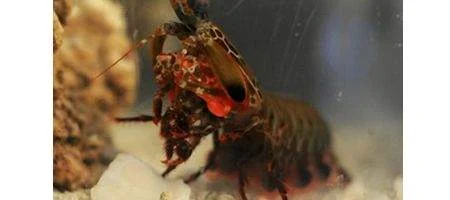Engineers are turning to a tiny crustacean for inspiration in creating military body armor and vehicle and aircraft frames.

They’re aiming to incorporate the unique structure of the club-like arm of the mantis shrimp, or stomatopod – a four-inch long crustacean found in tropical waters.
Its arm accelerates underwater faster than a 22-caliber bullet, and repeated blows can destroy mollusk shells and crab exoskeletons – both studied for decades for their impact-resistant qualities. In other words, it’s tough.
The University of California/Riverside team found that the club is composed of three specialized regions that work together to create a structure tougher than many engineered ceramics.
The first region, located at the impacting surface of the club, contains a high concentration of mineral, similar to that found in human bone, which supports the impact when the mantis shrimp strikes prey.
Further inside, highly organized and rotated layers of chitin fibers dispersed in mineral act as a shock absorber. Finally, the club is encapsulated on its sides by oriented chitin fibers, which wrap around it and protect it.
“This club is stiff, yet it’s light-weight and tough, making it incredibly impact tolerant and interestingly, shock resistant,” says David Kisailus of Riverside’s Bourns College of Engineering. “That’s the holy grail for materials engineers.”
He says products based on it could be lighter weight and more impact resistant than existing products.He’s most interested in applications in military body armor, aiming to develop a material that is one-third the weight and thickness of existing products.






